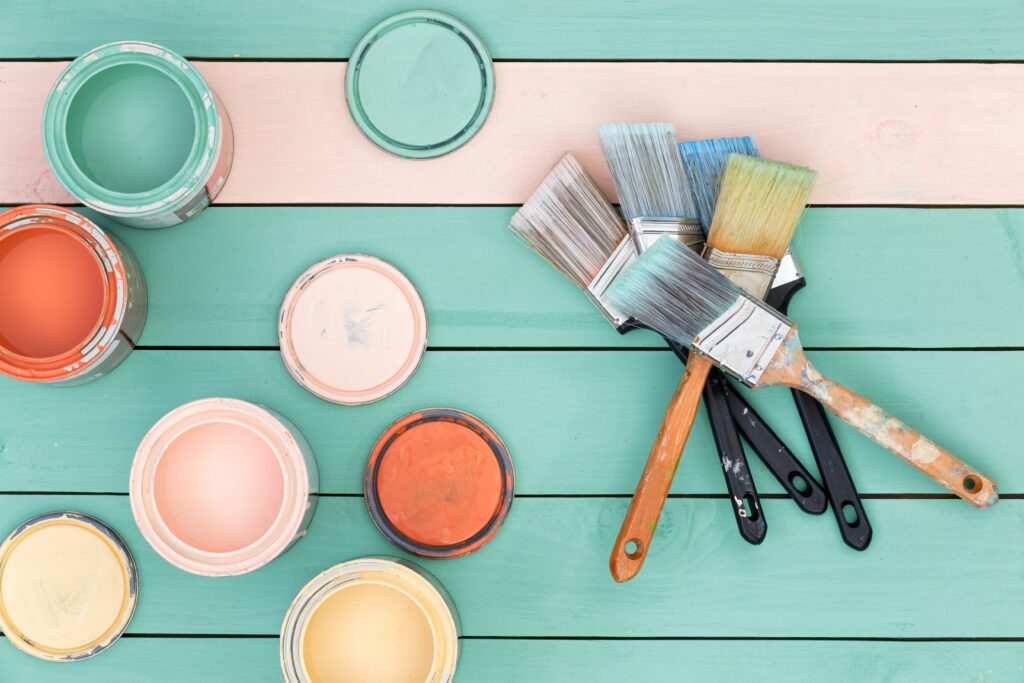When tackling a wood project either indoors or out, the finishing options often come down to stain, paint or leave au naturel. Whilst leaving wood in its raw, natural state can be effective, depending on where a project is to be situated and what it will be exposed to, a paint or stain can add protection and a welcome splash of colour. When faced with the decision, wood stain or paint? How do you know which to choose? In this article, we pit paint against stain and see which comes out on top and provide advice on which projects to use each product on.

What Are The Differences Between Wood Stain and Paint?
The main difference between paint and stain is viscosity. Paints are much thicker with more pigments and will sit on the surface of the wood. Stains are a lot thinner, have less pigment and soak into the wood.
Pros and cons of each?
- Protection – Wood, as a natural product, needs to breathe. Paint inhibits the ability of the wood to breathe and can allow moisture to collect under the surface. The result? Rotting wood! Most stains do allow wood to breathe, therefore the winner is…. Stain
- Colour choice – Paint is available in a huge range of colours so whatever your project, you are sure to find the perfect match (or clash, depending on your design ideas). Stains are limited to just a few colours, so your choice won’t be as broad. Winner…. Paint
- Conceal or Highlight – If you still want to see the beauty of your natural wood, a stain might be the better choice. It will soak in and highlight the grain, rather than covering the surface, as paint does. However, if you have imperfections and repairs/fills, then paint will conceal these nicely. Depending on preference, in this case it’s…. a draw
- Reapplication – Paint is tiresome to remove once faded and peeling, as will happen no matter how well it is applied, especially to outdoor projects. It will need to be sanded off and repainted, all of which takes time. When stain fades (it won’t peel or crack like pain), it simply needs to have a re-application on top of the previous stain. The winner? Stain
- Budget friendly – Stain is generally marginally cheaper than paint, but then you are likely to need more due to the fact that it soaks into the wood. We think… a draw
Does It Matter Which Finish I Choose For Outdoor and Indoor Projects?
When considering your options for an outdoor project, there is more to consider than an indoor one. The harsh elements can affect any paint or stain job. Paint can do a better job than stain in the prevention of sun damage and mould formation. The imperfections and cracks in wood can be filled and covered with paint, thus giving a smart appearance to your projects. Stain, whilst allowing the natural beauty to shine through, does nothing to hide imperfections. Either product is fine to use on indoor projects – it will all come down to preference and what the project will be used for in the home. When using paints and stains outdoors, remember to choose ones which have been specifically produced for outdoor use.
What About The Application?
Application of stain can be done using a brush or a sprayer – great to save time! Stain is probably a bit too watery to use with a roller. Paint can be applied using a roller or brush – all depending on what and where the project is, the size and the finish you desire. With a little dilution, paint can also be applied using a spray gun.
What’s The Verdict?
There is no clear winner, both products have their advantages and disadvantages. Your decision will come down to where the project is – indoors or outdoors, the condition of the wood, blemished or pristine and your own personal preference for the finish and the final look.






